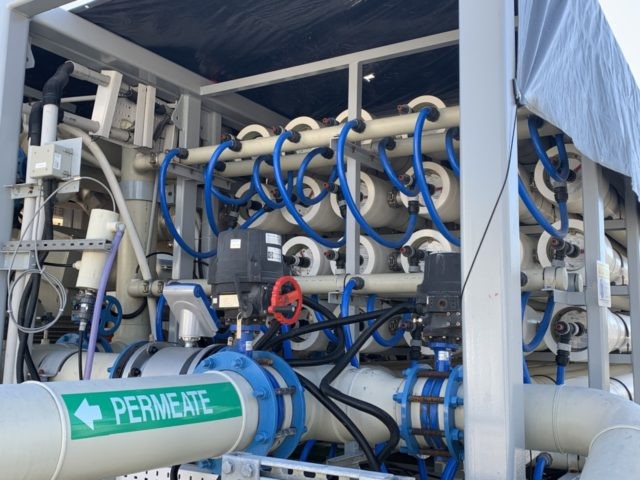San Diego’s plan to turn sewage into drinking water using so-called “toilet-to-tap” technology has cleared the last regulatory hurdles and could begin operation by 2025.
The San Diego Union-Tribune reported Saturday:
San Diego is ready to start building the long-awaited Pure Water sewage recycling system, now that city officials have resolved litigation that delayed the project 18 months and increased its estimated cost to $5 billion, city officials say.
Pure Water will boost San Diego’s water independence by recycling 83 million gallons of treated sewage into potable drinking water by 2035.
All regulatory permits have been secured and construction bids are being opened and analyzed for the 10 projects that will make up Pure Water phase one, a large treatment facility slated to open in 2025 near Miramar that will be connected to many miles of pipeline in the northern part of the city.
As Breitbart News reported two years ago, many local authorities are considering projects that could increase water supplies through desalination or through treating wastewater:
As for water storage, the prospect of new plans — such as raising the height of the Shasta Dam — seemed to dim with the new Democratic majority in the U.S. House of Representatives. New “progressives,” led by first-year Rep. Alexandria Ocasio-Cortez (D-NY), supported a “Green New Deal” that sought to move the entire U.S. economy to 100% renewable energy sources by 2030 — but”renewables” pointedly excluded hydroelectric power from dams, which use water to generate electricity but do not consume it, leaving it available for other uses.
That leaves two options for dealing with chronic water scarcity in California: conservation, and “creation.” The state’s residents could learn to live with radical reductions in water use, such as those contemplated by a new, non-binding state targetfor indoor water usage of 55 gallons per person per day, announced in 2018.
Alternatively — or, in addition — the state could also use new technologies to convert sea water, filtered sewage effluent, agricultural runoff, or other non-potable sources of water into potable water.
Given that droughts tend to recur — and predictions by climate change activists that droughts will be even more frequent in the future — it might seem that desalination and other methods of creating fresh water would provide a solution.
Both desalination and “toilet-to-tap” utilize new developments in reverse osmosis technology, which extracts pure water from seawater or sewage.
However, as this reporter noted in 2019, wastewater purification “is less expensive and less energy-intensive than desalination.”
Public enthusiasm for new water projects has waned in recent years, as memories of California’s 2011-2017 drought have faded. But after the first relatively dry winter in years, Californians may once again show interest in unconventional solutions.
Joel B. Pollak is Senior Editor-at-Large at Breitbart News and the host of Breitbart News Sunday on Sirius XM Patriot on Sunday evenings from 7 p.m. to 10 p.m. ET (4 p.m. to 7 p.m. PT). He is the author of the recent e-book, Neither Free nor Fair: The 2020 U.S. Presidential Election. His recent book, RED NOVEMBER, tells the story of the 2020 Democratic presidential primary from a conservative perspective. He is a winner of the 2018 Robert Novak Journalism Alumni Fellowship. Follow him on Twitter at @joelpollak.
Photo: file

COMMENTS
Please let us know if you're having issues with commenting.